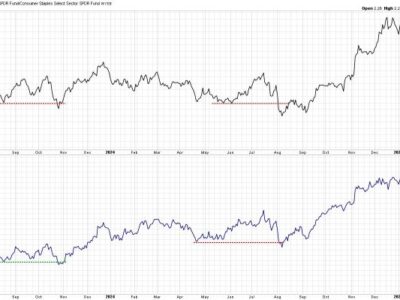
As President Biden and Chinese President Xi Jinping prepare for their meeting next week, some of their briefers may bring up the word “hegemon.”
The condition is generally linked with “domination,” or sometimes “mastery” or “supremacy.” Insofar it has been achieved, it has been regional, and the only country to have done so in recent centuries is said to be the United States, which has been held to have “dominated” its hemisphere.
However, China, it is feared, may be able to achieve that status in its neighborhood if it continues to grow economically and to expand its military. Indeed, a central contention for many prominent academics and officials is that it may well be necessary to use armed force (or to “come onshore”) to keep China from achieving the technical status of hegemon.
In his highly readable and well‐researched new book We May Dominate the World: Ambition, Anxiety, and the Rise of the American Colossus, Sean Mirski assesses the American experience with hegemony from 1860 to 1945. The book derives the first words in its title from spoutings in 1901 by Brooks Adams, a grandson of John Quincy Adams, and it can be taken to suggest that “domination” is filled with peril, resistance, and disappointment, is something of a fantasy, and is scarcely worth the effort. Prospective hegemons like China might best be advised to avoid the condition.
Pursuing stability
In 1821, Adams’ grandfather famously pointed out that the United States “goes not abroad in search of monsters to destroy.” Yet, a century later, notes Mirski, the country “was battling monsters, real and imagined” throughout the New World in a series of misadventures primarily designed to get and to keep the unruly Latin Americans under control. These included “occupying two entire nations, garrisoning parts of three more, running half a dozen protectorates and customs receiverships, prosecuting several bloody counterinsurgencies, and deposing regimes with a frequency that bordered on the gratuitous.”
For example, in 1915 a mission was sent to Haiti after what Mirski calls its “tinpot dictator” was killed by an angry mob. This led to a costly and chaotic occupation that lasted until 1934, after which the country devolved back to what seems to more or less what had existed before. Occupying American soldiers were mainly despised (except by artful local opportunists seeking to manipulate the interventions to their own advantage), and the occupiers learned to walk down the middle of streets to be better able to dodge the garbage hurled at them by the undominated locals.
An earlier enterprise in 1903 was more successful. In the 60 years prior, revolutionists in the province of Panama had sought at least 50 times to secede from Colombia. Although the United States had often helped Colombia put these rebellions down, it had become anxious to get a canal built there after a French effort has gone bankrupt, and the U.S. government was frustrated with negotiations with what President Theodore Roosevelt called “the homicidal corruptionists” running Colombia. Accordingly, the United States switched sides. An amazing inept expeditionary force sent by Colombia to counter the effort was readily bribed into submission. Mirski considers the American caper to have been unnecessary and a “blunder.”
Dealing with foreign interlopers
Mirski argues, however, that U.S. interventions did manage to succeed at one hegemonic task: keeping other great or potentially great powers out of the hemisphere. And there may have been some successes at this: most notably in helping to further derail bungled probes by the French before and during the American civil war and by Germany in the runup to America’s entry into World War I.
In addition, agents from Germany, France, Britain, and Russia had their eyes on the strategically important Hawaiian Islands at various times. But alarms were raised in particular when a rising Japan sent a warship and demanded imported Japanese workers there be given the vote at a time when they outnumbered whites and native Hawaiians. This was also when the government was, in Mirski’s words, “rickety,” “wobbly,” and “defenseless.” To hedge against an obvious possibility, the United States annexed the islands in 1898.
Acting mostly out of humanitarian motives, the hegemon also ousted colonial Spain from Cuba in a war in 1898. However, Mirski fails to note that many Spaniards welcomed the war because a defeat would allow them to withdraw honorably from their highly troublesome colony. In the process, the United States also snapped up the Philippines, an act of opportunism that proved to be disastrous for both colonial powers. The United States also seized and held onto the more‐valued colony of Puerto Rico which, as it happens, now has the highest GDP per capita of any entity south of the Rio Grande (perhaps there is lesson here?)
However, for the most part, foreign powers sought to intervene in Latin America not to undermine American “hegemony” but to collect debts and to protect their nationals residing there. Indeed, the wily Europeans were sometimes able to snooker the alarmed Americans into doing such work for them. Nonetheless, the Americans found (or imagined) any European efforts to be threatening.
Accordingly, the United States became obsessed with Latin American corruption and disorderliness (five changes of government in a year was not uncommon), weaknesses that might allow for the reentry of one European rival or another. However, Mirski finds that “time and again” intervention by the great northern dominator “would miscarry, leading to greater instability,” presumably leaving Latin America even more vulnerable to intervention by the dreaded interloping Europeans.
Actually, despite the chaos so fulsomely exacerbated by the United States, it seems likely that the European rivals never got around to reinserting themselves not because of American “hegemony,” but because they were fully consumed with a couple of other tasks: colonizing Africa and Asia, and misdealing with each other in a manner that led to two massive wars on their continent.
Giving up
Eventually, the United States essentially gave up in frustration on the dominance routine, and it left the Latins free to “work out their own salvation,” as President Woodrow Wilson put it. From time to time, America applied economic and diplomatic pressure and it tried—and mostly failed at—covert regime change. But, with a few exceptions, it substantially abandoned armed intervention and interference.
This led to a wide collection of military dictatorships that often provided at least a degree of stability, and they were mostly tolerated. But then—although not covered in the book—almost the entire area went democratic between 1975 and 1990 and coups all but vanished. The United States certainly encouraged this development, and it may have been quietly instrumental in a few cases.
But efforts by the hegemon were not key. Likely far more important were changes in doctrine in the Catholic church and inspiration derived from Spain and Portugal which went democratic and joined prosperous Europe after their long‐reigning dictators died. As one reporter put it, “despots have gone out of style.”
The most prominent use of force, of course, was with Cuba where the United States tried and failed to topple the Communist regime. Efforts at subversion also failed, and the Cuban government has been thumbing its nose at the supposedly “dominating” nearby hegemon for 64 years. The United States also applied sanctions (also more lately to Venezuela) with, as usual, no positive policy result.
The chief hegemonic success story (besides, perhaps, keeping foreign weapons that are potentially offensive out of Cuba), was the use of military force that successfully reimposed democracy when it lapsed in tiny Panama in 1989 and even tinier Grenada in 1983. That measure had routinely failed earlier in the century. This time, however, the interventions worked: democracy resumed after the Americans left.
China?
Overall, there’s little in this record to inspire would‐be “hegemons” elsewhere. Although the United States sometimes got its way in its area, it is absurd to think that, even under ideal “hegemonic” conditions, it “dominated” by any reasonable definition of that extreme word.
And if the United States could not really dominate the insecure countries in its neighborhood during its hegemonic century, it seems unlikely that a hegemonic China could do much better in its area. As Mirsky notes, many of the countries there are far more secure and better equipped than the Latins of yore, particularly Japan, South Korea, India, Vietnam, Indonesia, and Australia. In addition, unlike their Latin American counterparts, they would probably seek to coordinate with each other and with the United States against a China threat—some of that has already happened, in fact. And, like the Latins, they would evade diktats issued by their large and increasingly despised neighbor.








